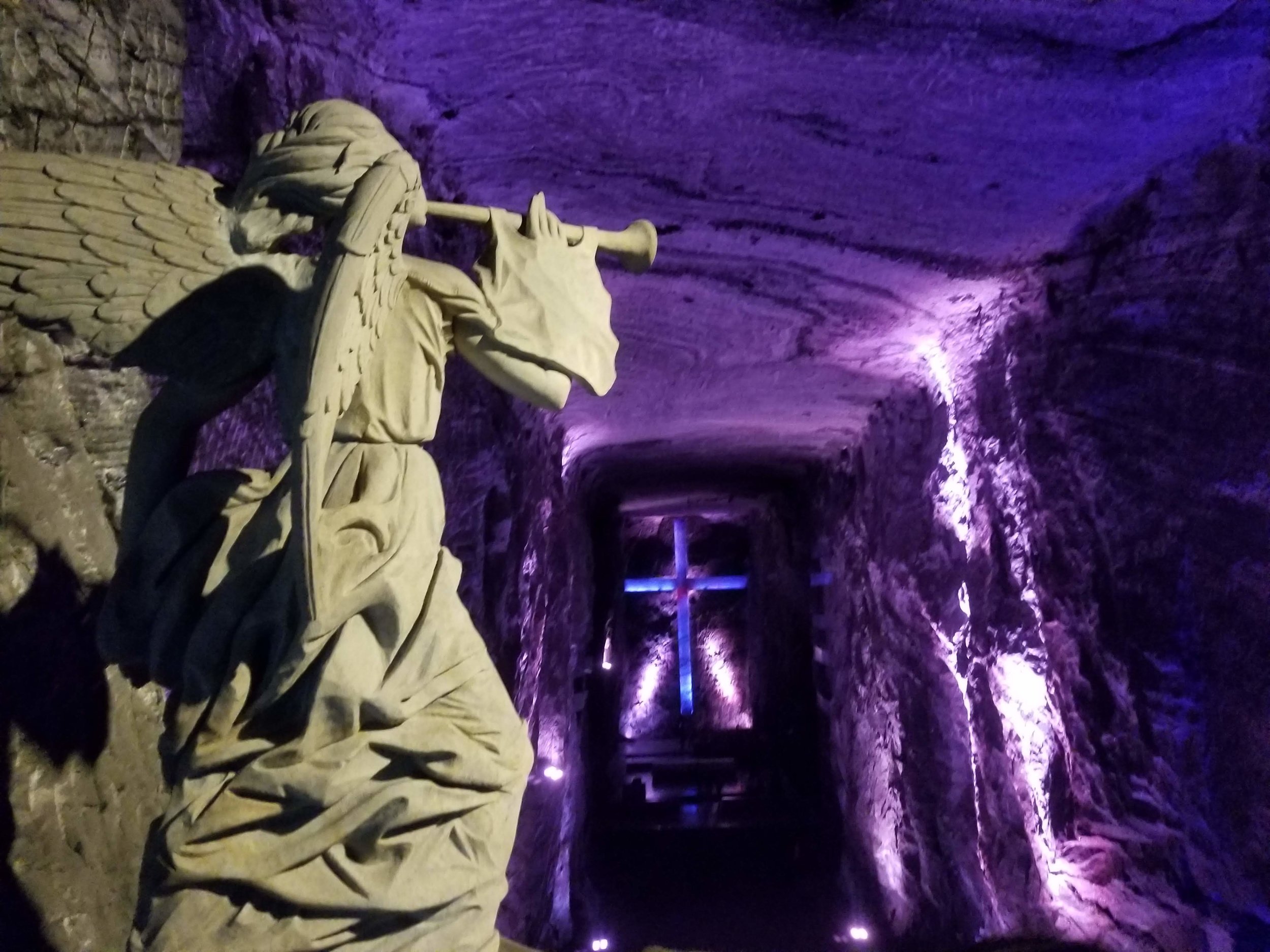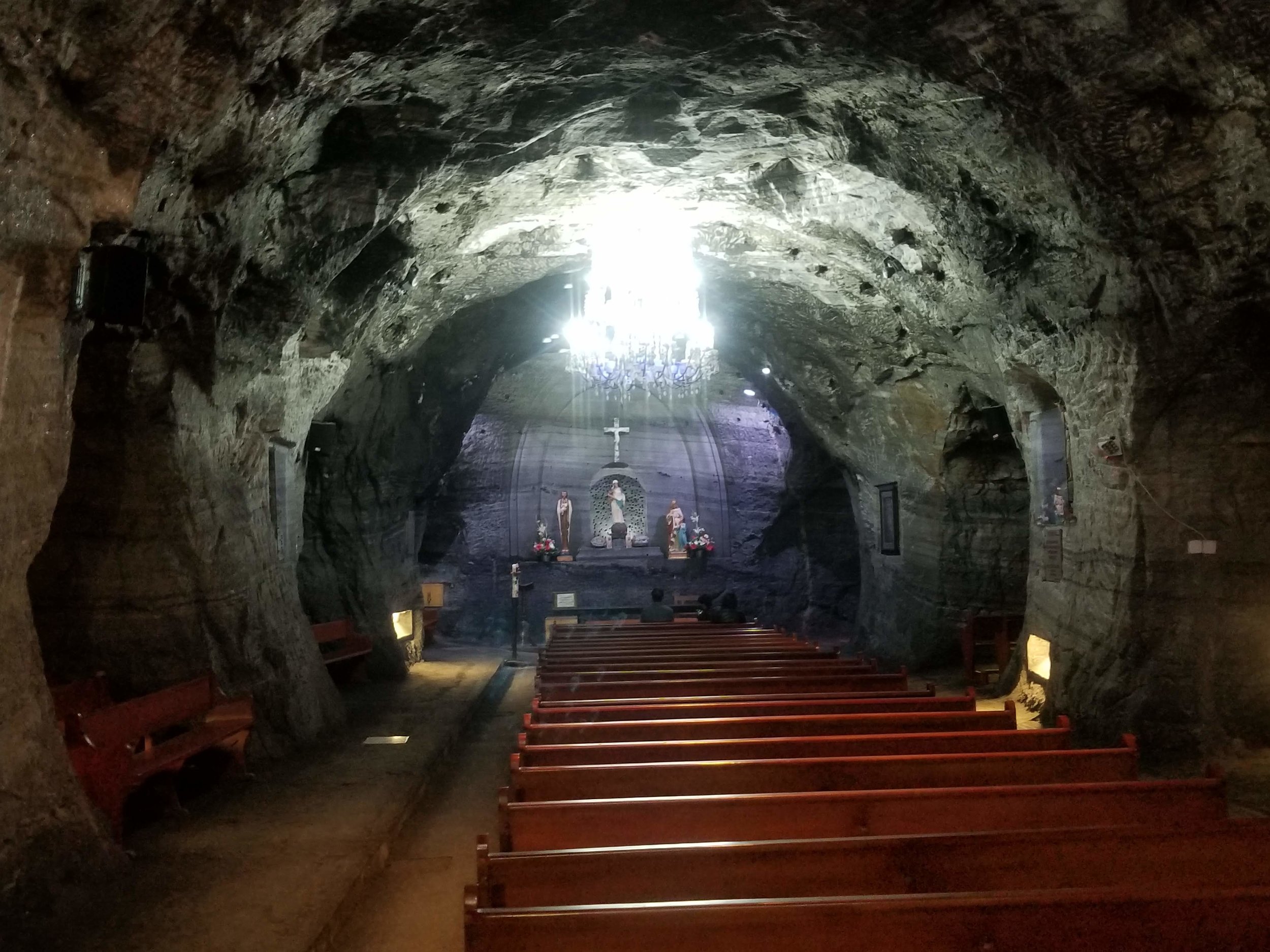“People are not depressed in Colombia the same way people are in America.”
With hundreds of miles of entrancing coastline, vibrant historic cities and cultural exports as popular and diverse as Gabriel Garcia Marquez and Shakira, Colombia is rapidly becoming one of the most popular travel destinations in Latin America.
Many tourists head directly to ecological and adventure trips that include exploring the Amazon, Andes mountains, beaches on the Caribbean coast and coffee plantations along the Pacific. But as Colombia’s cities and people emerge from the impacts of the more than 50-year old civil war between the government and rebel groups, they’ve taken their experience and turned it into art and a passion for life. It comes as no surprise that Colombia - the birthplace of magical realism - creates beauty from the gritty reality of history.
If you’re ready to be entranced by Colombia, direct flights are available to the capital city of Bogota, as well as Cartagena, from most major US hubs. Miami also offers direct flights to other major cities: Medellin, Cali and Barranquilla. The country’s growing popularity means more flights and destinations are added almost monthly.
If you’re ready to book, go ahead and email me at maury.newburger@frosch.com. Otherwise, read on…
Bogota:
More populous than Los Angeles, higher in the mountains than Denver and almost a hundred years older than New York City, Bogota has always been one of the capital cities of the Americas. Whether hosting UN Conferences or international intrigue, Bogota has the grandeur of Washington D.C., if Washington D.C. was the home of salsa dancing and some of the most exciting nightlife in the Western Hemisphere.
Bogota’s outdoor Sunday markets are the perfect place to pick up a mochila archuaca, (Arhuacan knapsack), known locally as just a “mochila.” Indigenous women create these hardy shoulder bags from agave, cotton, hemp and wool. Decorated with intricate symbols, they are a symbol of Colombia’s indigenous origins and identity. Because the bags are hand-woven and hand-dyed, each one is a unique expression of its creator’s identity. When you find one that speaks to you, be sure to ask the vendor about its meaning and history. The bags aren’t just art pieces -- they’re part of daily life for most Colombians. Wearing one will help you blend in with local crowds.
A short distance drive north of Bogota, the Salt Cathedral of Zipaquira is an enormous church created 600 feet underground in a salt mine. Large enough for 8,000 worshippers and built entirely by miners, the Salt Cathedral epitomizes Colombians’ ability to create beauty in all circumstances.
Cartagena:
Bogota may be Colombia’s capital, but you’d never know it from browsing Instagram. The brightly painted houses, stores and street cafes of Cartagena’s Old City are a gold mine for photographers, shutterbugs and influencers of all stripes. It certainly helps that the city lies on the Caribbean sea, only 2.5 hours by air from Miami, and enjoys near-constant sunshine from November to April.
The Old City lives up to the Instagram posts. It hosts dozens of award-winning restaurants, art galleries, speciality stores featuring Colombian chocolate, coffee and emeralds, street performers, markets and museums.
If the Old City becomes a little overwhelming or overcrowded, retreat to Getsemaní, just to the South of the old city walls. The area is actually even older than the Old City, but it’s a vibrant neighborhood home to Cartagena’s young artists, popular local restaurants and lots of families.
If you prefer sweeping views, pristine lobbies and modern amenities to the Old City’s hustle, you may prefer a hotel in Bocagrande, a strip of newly-built high rises along the beach. This is also a good option for mid-budget travelers who want the amenities of a luxury hotel without paying Old City prices.
Cartagena’s other main attraction is the long, sandy beaches along the Caribbean. The beaches close to the city tend to be crowded and attract plenty of vendors and touts. They can be a memorable cultural experience, but tend not to be relaxing. If you want to get a little time to clear your head, book a trip to one of the beautiful islands off of Cartagena - accessible by boat, and easy to do for a day-trip - for some serene snorkeling and a peaceful stretch of sand.
Get in touch and I’ll share my favorite spots.
Medellin:
No city epitomizes Colombia’s tourism renaissance like Medellin. Once synonymous with Pablo Escobar’s Medellin Cartel, today the city is renowned for its innovative urban planning. The best way to get a feel for it is to travel via city’s new cable-car transit system.
As in other Colombian cities, young artists and entrepreneurs have made an industry out of their history. Medellin’s District 13 used to be considered the most dangerous neighborhood in the most dangerous city in Colombia. Today, tour guides bring visitors to tour the vivid street art created by District 13’s youth. Booking a tour is the best way to see a unique side of Colombian life while supporting young artists.
If your art tastes run less towards the bleeding edge of contemporary art, the Botero Museum houses more than 100 pieces from the man who called himself “the most Colombian of Colombian artists.” It also collects dozens of pieces gifted to Botero from renowned artists throughout the world.
Medellin is also the perfect jumping off spot to tour coffee plantations. Much like wine, every drop of coffee tastes just a bit different depending on the altitude, moisture and sunshine where it was grown. Colombia’s mist-shrouded plantations are renowned for the sweet, light taste of their Arabica beans. Getting to taste a fresh picked and roasted cup of coffee is a rare treat!
A note on safety:
For over a decade, Colombia has been safe enough to become one of the world’s great travel destinations. But it’s still a dynamic society recovering from decades of conflict and centuries of drastic inequality. Keep your wits about you. Avoid flashy displays of jewelry, watches, cameras and late-model cell phones. Speaking a bit of Spanish and dressing like a local (try buying a mochila and avoid wearing shorts and flip-flops) goes a long way.
Colombia’s poverty and history of conflict have also made it a hotspot for vice tourism. Many travelers, especially unaccompanied men, will encounter offers of drugs and/or sex. Not only is drug use in Colombia illegal, but purchasing and using drugs contributes to the conflict that has brought misery to Colombia’s people. Sex work is legal for adults, but many Colombians, both men and women, participate in the trade out of dire economic necessity, rather than by choice. Make responsible choices both for your own safety and out of respect to your Colombian hosts.
In big cities…
…and small towns
…Colombia offers a world of colors to discover.
Bogota’s place among the clouds is clear from the air.
Every mochila is as unique as its creator - and its owner
Cartagena’s old city lives up to the hype - but get there soon. It’s becoming harder and harder to find a quiet street.
Bocagrande offers a more modern, high rise experience
For a true premium experience, stay at one of the luxury hotels in Cartagena’s old city. There you’ll discover the perfect balance of excitement and serenity.
District 13, as it looks today.
Once a hotbed for the drug trade, Medellin is now known for its innovative urban planning practices, like the new cablecar line.
A vision of Colombia’s future from a young District 13 artist
The Colombian coffee bean and flower














